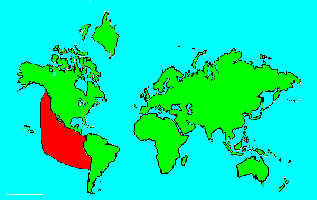SPECIES INFO
Wedge rump or Galapagos storm petrel (Oceanodroma tethys) is found from California south to Chile in the vicinity of the eastern Pacific Ocean. This storm petrel is about 7-8 inches in length. In flight, the dorsal side of this storm petrel has a brown and very pale brown inner wing with dark brown feathers. The head, neck, and back are brown. However, the lower back has a very large area of white. Ventrally in flight the head, neck, and breast are dark brown. The wings are brown with a pale patch in the center. However, the white area extends down both sides to almost encircle the lower back.The storm petrel genus (Oceanodroma) is found in the Northern Hemisphere, but sometimes migrating to the Southern Hemisphere for the winter. Although Peter Harrison in 1983 counted nine or ten species, Monroe in 1993 changed the count to 13 species with one extinct species leaving 12 species. Clements in 2007 also lists 12 species. These are smaller seabirds generally less than 10 inches in length. The wing spread is generally over twice as broad as the length. These usually have forked tails and short legs. The dorsal color is usually dark, but usually a paler wing area occurs near the body.
Storm Petrels (Family Hydrobatidae) contains 22 different species of small birds that frequent the open oceans of the world.
The Cahow (Pterodroma cahow) is a member of the storm petrel family. This species was considered extinct for over three centuries until an example was discovered near Bermuda in l951. By l961, 18 breeding pairs had been discovered on remote islands near Bermuda. Because they breed in crevices and burrows and only leave by night, it is very hard to establish their breeding presence. DDT caused the breeding to decrease for a while, but as of l987 there were 42 breeding pairs limited to the islands around Bermuda. (There is on photograph for this species.)
Tube Nosed Swimmers (Order Procellariiformes) contains three families of primarily marine birds. There are about 114 different species in this order. The albatrosses, shearwaters, storm petrels, and diving petrels are contained in this order.
Aves contains about 8,650 different species of living birds known to science. Each year about one new species is discovered in some remote rain forest or remote island. In addition, scientists have been raising many subspecies to full species status which may raise the species count to 10,000. Birdlife recognizes 10,027 species as of 2011.
However, each year about one species goes extinct. The rate of extinction is increasing, and the rate of new discovery is decreasing, so that the number of bird species will soon begin to decline rapidly. Although different taxonomists would organize the birds differently, there are approximately twenty-seven orders of birds. These orders are broken down into about one hundred and fifty-five different families.
Recent research of the genetic structure of some of the shore birds and owls would indicate that the present organization of orders and families should have some modification.
The birds are a worldwide group of animals that are characterized by having the front limbs modified into wings that are used for flying. Perhaps the most unique feature of the birds is the feathers. These feathers are made up of a central support called a quill and a series of small filaments that are hooked together as barbs.
For many years it was believed that Archaeopteryx discovered in Bavaria was the oldest bird from about 150 million years ago. However, in l986, Sankar Chattterjee, a Texas paleontologist, reportedly discovered a bird in the genus Protoavis that lived about 225 million years ago.
When this project was begun in 1978, we used Austin & Singer for bird taxonomy. Since then, we have adopted many changes, but have kept some older concepts that are still found widely in the literature. Recently, we have used Clements and Howard & Moore. Very recently, we have used Monroe and Sibley for the higher taxonomy of the perching birds.
Backboned Animals (Phylum Chordata) are the most advanced group of animals on earth. These animals are characterized by having a spinal cord or backbone. Most members have a clearly defined brain that controls the organism through a spinal cord. Fish, amphibians, reptiles, birds, and mammals are in this phylum.
Currently, some taxonomists believe that the fish should be divided into two groups (sharks and regular fishes) and that there are some other primitive groups in the phylum such as hagfish or lampreys.
Animal Kingdom contains numerous organisms that feed on other animals or plants. Included in the animal kingdom are the lower marine invertebrates such as sponges and corals, the jointed legged animals such as insects and spiders, and the backboned animals such as fish, amphibians, reptiles, birds, and mammals.

